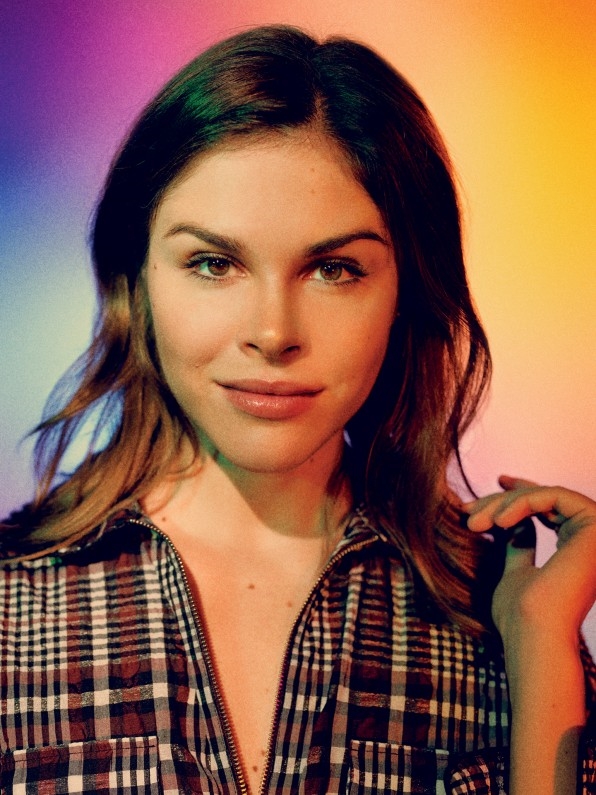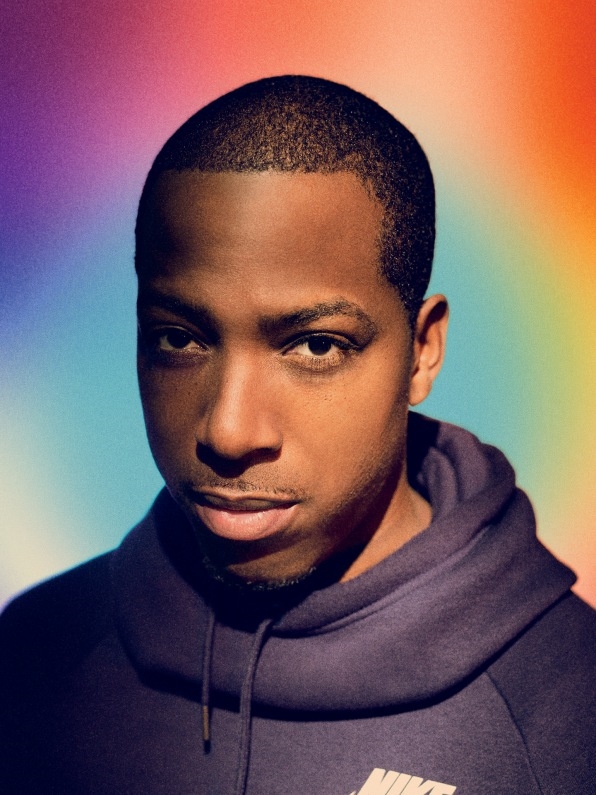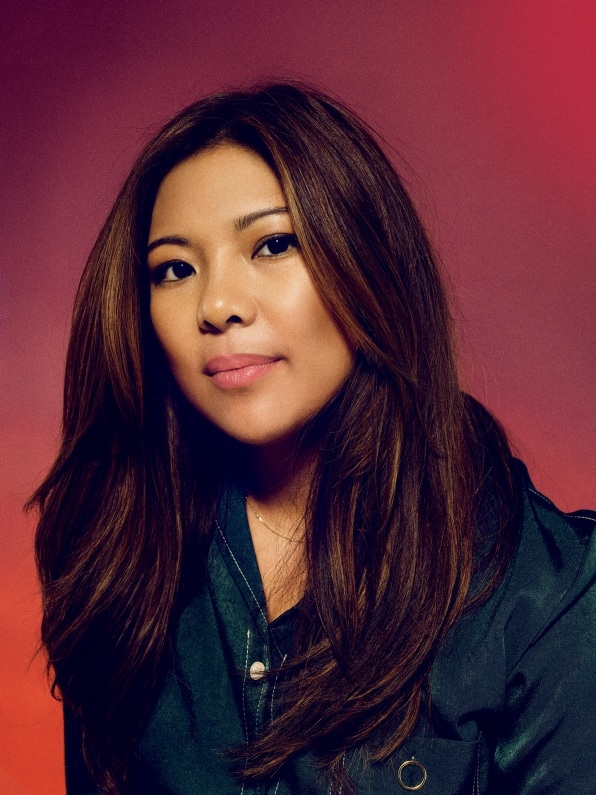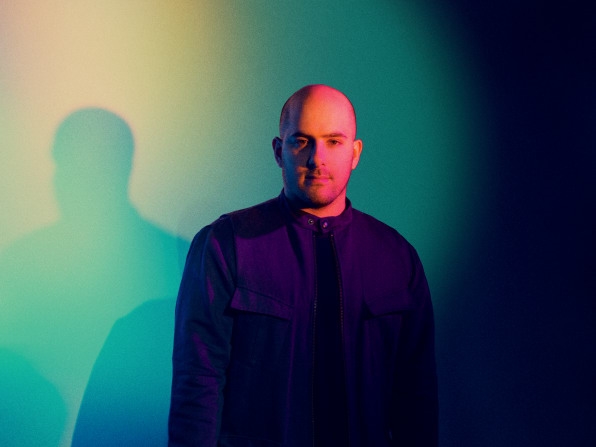Salad. Suitcases. Razors. Face wash. None of these words typically inspire enthusiasm. But when associated with certain fast-growing enterprises, the reactions can be rapturous. Sweetgreen’s Nicolas Jammet, Away’s Jen Rubio, Walker & Company’s Tristan Walker, and Glossier’s Emily Weiss talk to Fast Company‘s Amy Farley about creating products that provoke passion.
Fast Company: When we talk about cult brands, we often mean companies that have been able to identify a void in the marketplace. Was this on your mind when you were founding your business?
Emily Weiss: Beauty has traditionally been brands telling customers that they have some kind of inadequacy or that they should ascribe to a specific idea of perfection. The insight that we had at Glossier was to encourage every woman to become her own expert.

[Photo: Herring & Herring; Set designer: Wunderkind; Grooming: Kim White, Zuleika Viera ]
Tristan Walker: I couldn’t shave, and I was frustrated. I thought, Here is an industry that’s been around for 100 years and, [because] I have curly hair on my face, I couldn’t use any of the mass-market tools that existed. And the shopping experience sucked: I would have to go to these ethnic beauty aisles that are always next to the beauty aisle. So [Walker & Company shaving line Bevel] started with my problem, but I also wanted to build a brand that was culturally relevant. With [women’s haircare line] Form, we are giving you a personalized [haircare] product bundle and usage regimen, which really hasn’t been done in the space. We’ll get a sense of the humidity in your zip code, whether you swim or exercise regularly, if you’ve had chemo treatments, if you’re pregnant. All of this stuff impacts your hair health. With both Bevel and Form, we’re not only changing behavior for the consumer but the industry as well.
Nicolas Jamet: When we looked around the food landscape, we didn’t understand why the most delicious, compelling, and accessible food was always the least healthy. Why couldn’t you have all those things, but have a product that makes you physically feel good?
Jen Rubio: My luggage broke. I was looking for something to replace it, and that’s when I realized that there are very few luggage brands out there with the kind of affinity that we see in areas like beauty or fashion. My cofounder, Steph Korey, and I set out to create the perfect suitcase. But our mission is really to make travel more seamless, enjoyable, and accessible for people. Luggage is just the first part.
FC: Away also has its own podcast, along with a website and quarterly print magazine, called Here, devoted to travel stories. Why is content so important?
JR: When we were building Away, we noticed that there were few instances where people who were selling luggage actually talked about what you do with it—which blows my mind because travel is such a fun, exciting thing. People were talking about wheels and zippers and material, but no one was giving the context. [Today] our customers will actually call our customer service team and ask for travel tips and advice.
EW: People have so many choices of whose story they want to listen to. Eighty percent of Glossier’s growth and sales come through peer-to-peer recommendations or our own channels. That goes to show that women are not necessarily listening to beauty brands. They are ultimately trusting their friends. So we see our community as co-conspirators, co-builders, co-storytellers. We see the life of each product we launch starting once it hits [our customer’s] doorstep—once she unboxes it, takes a picture of it on social media, and tells her story.
FC: Emily, you recently created a representative program that allows your customers to sell your products through their own Glossier web page. What have you learned from this?
EW: It’s been interesting to think about what incentivizes these women. Is it money? It’s actually not. So many of these women are interested in early access to product, in getting closer to our company. They want to come into our office and work with our creative team for the day, to help develop future products. That speaks to this idea of a cult brand being something that, quite literally, is a living and breathing group.
FC: Though it can be used by anyone, Bevel addresses the specific shaving needs of black men. But when you went into Target, Tristan, you discovered that a lot of Caucasian men were buying your products. Did that change the way you positioned the brand?
TW: It didn’t change anything. In fact, it validated my thesis. We started Walker & Company with this belief that global culture is led by American culture, which is led by black culture. You think of food and music and dance—black culture inspires all these. Seventy to 75% of our customers online are black men, and roughly 60% in Target are white men. I think that’s a function of us being so supported by the [hip-hop] community, and folks of all cultures and creeds are inspired by hip-hop. And because we’re not in the ethnic aisle.

[Photo: Herring & Herring; Set designer: Wunderkind; Grooming: Kim White, Zuleika Viera ]
NJ: It’s our responsibility as a brand to try to lead [customers] in a direction that we think they want to go. Ten years ago, we wanted to make healthy food cool. A few years in, we decided people ought to know about this work we were doing on our supply chain. So we put up lists [in our restaurants] that had all of the farms and the sources where our food came from, which at the time, in fast food or any fast-casual segment, was kind of crazy. Today, if you’re in our space and you don’t show where your food comes from, that’s crazy. Something customers didn’t want five years ago, today they demand.
FC: There’s a certain growth imperative that comes with being a cult brand. How does that work at Sweetgreen, when sourcing your food from the right suppliers is such a priority? Does that slow things down?
NJ: The company we’re building, there is no real blueprint for it. When we go to any new region we have to rebuild the supply chain, identify the ingredients and supply network that is the most sustainable. And then, most importantly, we have to be 100% transparent. So though we look up to companies, like Starbucks, that have changed customer behavior, there is no blueprint for scaling this kind of food. And that means building a whole different economic model. So it may mean more flexibility in store format, in how we get the food to people, or even in how we make it. We are on this constant evolution of understanding what it means to connect people to real food.
FC: Tristan, you’ve said that the publicity and awareness around Walker & Company has outpaced the actual business. What kind of pressure does that put on you?
TW: For physical-products companies, like Bevel and Form, you need money to make money. But once your brand outpaces your business, folks walk into fundraising meetings assuming that your revenues are a certain level without even thinking. Now I have to spend the first few minutes convincing them that we want to build something that’s around 100 years from now. That’s my challenge: How do I take all this cult-brand impact and make people visualize what it could be in 100 years?
EW: Any brand that exists on Instagram is inherently global. [Only] 50% of Glossier’s 800,000 followers are in the U.S. But because we have chosen to be direct-to-consumer, we fundamentally can’t keep up with the global demand. Distribution through a third party would be easier, but every time you launch in a new country as a beauty product, you need to print everything in that country’s language. Suddenly you’re ordering another 30,000 units of every one of your 35 products for a very small market. Like Tristan, we want to be around in 100 years—and being measured about it is, for us, the way to go. It’s just particularly difficult when half of your Instagram comments are, “I’m so excited about your fragrance, but I can’t have it!”
FC: What role does physical retail play in your strategy?
JR: When we were thinking about building a retail space, we couldn’t think of anything more boring than wall-to-wall suitcases. Our New York flagship store is pretty big, but I would guess the actual floor space dedicated to selling luggage is about 30%. The rest of the store is a café filled with travel books and items we’ve curated either to bring with you on your travels or things that we have brought back. We’re building context. I walked past the store the other day and someone was actually on Kayak, booking a flight. I was like, It’s working!

[Photo: Herring & Herring; Set designer: Wunderkind; Grooming: Kim White, Zuleika Viera ]
TW: People still love going to physical places. It’s not so much that physical retail is going to die; it’s just going to change. We were blessed to have Ron Johnson, [who oversaw] Apple retail, Target, and JCPenney, as an investor. I asked him, “Why did Apple retail work?” And what he said stuck with me. He said, “We built Apple retail stores for the 90% of people who walk in and don’t buy anything.” So when I think about Bevel, I wonder how can we have a Bevel retail [experience] that’s potentially not focused on haircuts. Like, what does that mean? A barbershop that isn’t focused on haircuts? It makes us reimagine everything.
NJ: Yeah, when people tell this narrative about retail Armageddon, I think that may be true for those that aren’t staying connected to their customer. Our retail experience has evolved like crazy over the past 10 years. Today, 40% of Sweetgreen’s transactions are digital. Three to four years ago, that was in the single digits. The most important thing is to look at your connection to the customer and how their behavior is changing. For us, it’s going to be hyperconvenient or hyperexperiential. People will want to come into a space, but there’s going to have to be a reason, whether it’s a sense of community or a sense of experience.
EW: [Glossier’s] only [permanent] retail is our showroom in New York on the sixth floor of our office building. It’s about 1,100 square feet. Last I checked, it did more sales per square foot than Apple. It sometimes has a thousand women coming up this rickety elevator [over] eight hours on a Saturday.
FC: How do you view partnerships, and do you worry that they distort the core brand?
TW: I’d partner with Emily!
EW: We believe in the power of the individual. And if you have many [individuals] who are electing your brand, who are excited about it and talking about it, then that is the equivalent of 10 Kardashians. So while it gives us great joy that Kim Instagrammed our Body Hero wash, we get much more excited, frankly, in seeing the power of the individual multiply and magnify. We see that as our partnerships.

[Photo: Herring & Herring; Set designer: Wunderkind; Grooming: Kim White, Zuleika Viera ]
JR: We have built [Away] off the shoulders of other brands we respect. There’s such a wide group of people who travel and who we’re trying to reach. So we look at different verticals, look for the best brands in those industries, and then partner with them to reach people that we wouldn’t have otherwise. I think a very big part of our customer base right now has heard about us through a partnership.
NJ: As we’ve tried to connect people to real food, we’ve realized that there is this incredible opportunity to use different ways to [reach] them. Every year, we do a couple of collaborations and partnerships that, to Jen’s point, help us tell a different part of our story and talk to a different group of folks. We’ve worked with everyone from Kendrick Lamar to great chefs like Dan Barber and David Chang. It’s also a way for us to continue to have fun with the brand and keep ourselves inspired.
FC: In this political climate, are there potential customers that you just don’t care about, who you feel like it’s okay to reject or not address?
TW: One of our most-liked Instagram posts was of Colin Kaepernick kneeling. We didn’t even feel like we were taking a risk [by posting it]. It was just like, This is a great photo and it represents something that is core to who we are. We leaned into it specifically because that’s expected from our customers. They’re talking about it, so why should we shy away from it?
This story was adapted from the Fast Company Innovation Festival.
Fast Company , Read Full Story
(43)